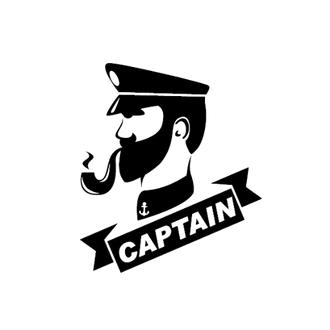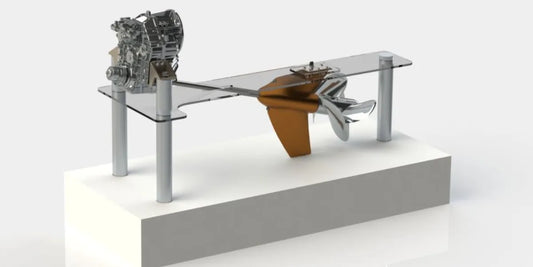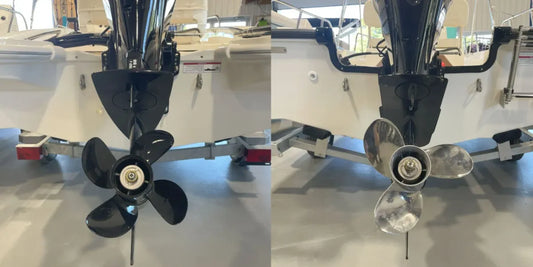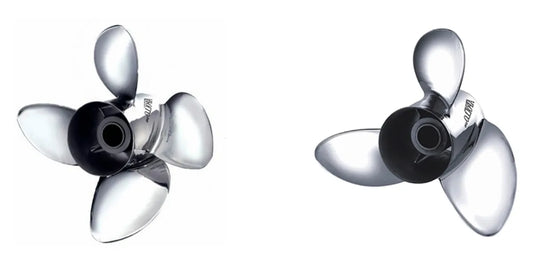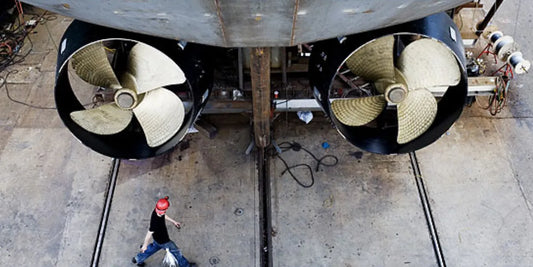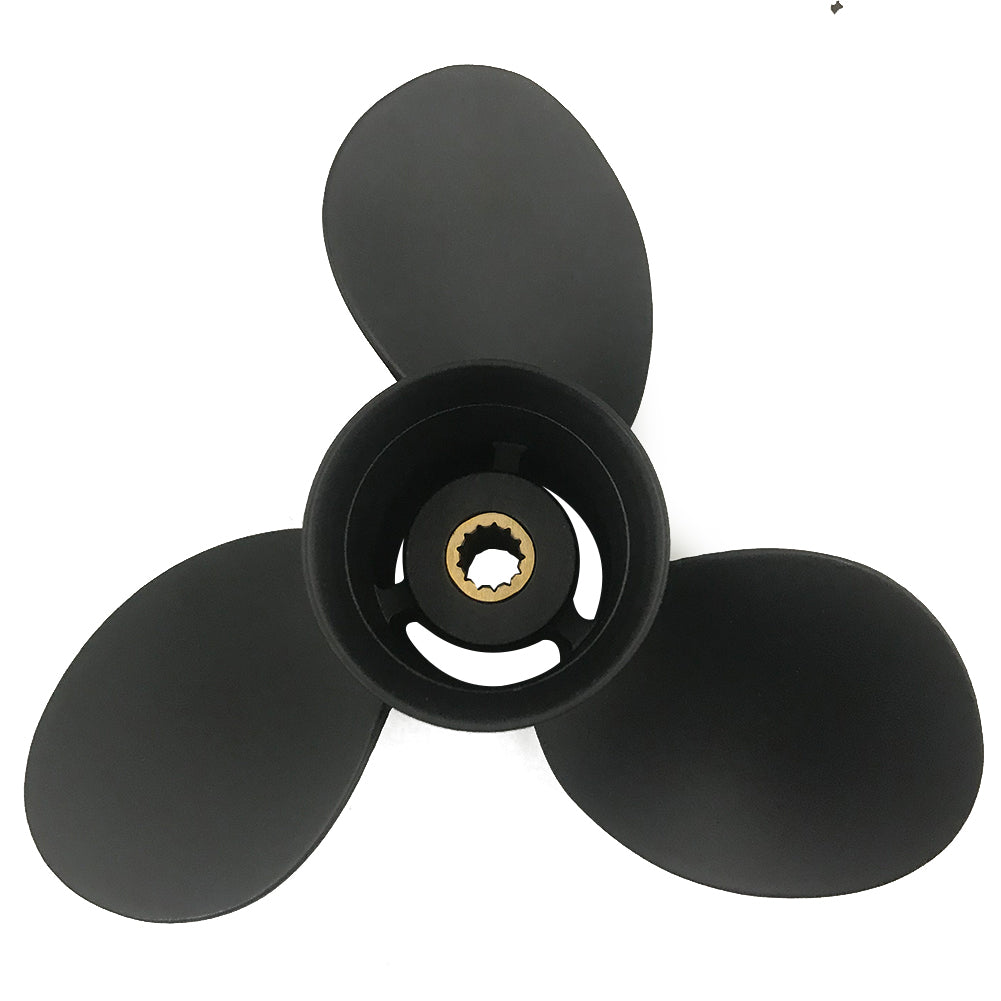When it comes to boating, enforced safe speeds serve not only as matters of legalities but are primary considerations to ensure the safety of everyone aboard and that of other users of the waterway. However, determining the speed of vessel operations is generally not an exact science, since it depends on myriad factors that interact with one another. From environmental conditions to water traffic, among other factors, a variety of parameters are involved. This article offers an in-depth examination of the key factors influencing boating speeds, equipping you with the necessary knowledge to make informed decisions and ensure safety on the water. Whether you are a seasoned skipper or new to the craft, understanding these criteria will be indispensable in the responsible and efficient navigation of the waterways.
Introduction to Safe Speeds for Your Boat

Importance of Safe Speed
The speed at which a vessel is operated, considering the ship's dimensions, should be safe to maintain control and ensure the safety of passengers and other users of the same waterway. A safe speed involves a concept not only of speed limits but also of a large number of factors that change by the minute; for instance, visibility varies with situations, traffic density, and the maneuverability of the vessel itself and other hazards it may be subject to, such as a submerged object or changes in depth. To cite an instance, if visibility is low due to fog or nighttime conditions, this calls for a slow speed, certainly to avoid collisions. Additionally, for vessels with displacement or those that do not respond quickly to ordnance, greater care must be taken regarding how speed affects the stopping distance and the ability to respond immediately to changes in order or course. A leading study in maritime safety states that inappropriate speeds cause accidents more frequently; therefore, real-time judgment becomes crucial. Thus, a careful consideration of all the above-mentioned variables can allow an operator to reduce risk and aid efficient navigation.
Establishing a Suitable Speed of the Boat
Sailor's safe speed depends upon conglomerations of environmental, mechanical, and operational conditions that affect navigational safety. Environmental factors include current in the water, wave heights, and weather visibility; in some cases, especially with heavy fog or storm conditions, one needs to reduce speed proportionately to take into account the restricted visibility and increased stopping distance. Mechanical considerations are closely tied to the actual size of the vessel, its propulsion power, and maneuverability. In such scenarios, somewhat larger craft with more limited propulsion would be considered for more cautious speed regulations, particularly in confined waters or near traffic zones. From an operational point of view, traffic density plays a crucial role; with high traffic density, speed should be low enough to allow timely responses to course adjustments and prevent collisions.
Operating at around 50% of the total engine output confers maximum fuel efficiency while preserving handling features that render the vessel responsive when quick maneuvers are required. Furthermore, in areas where vessels are considered high-risk, such as harbors or along shorelines, reducing speed below ten knots significantly reduces the risk of an accident. By methodically evaluating these factors, an existing vessel operator will be able to determine a suitable speed that is recommended for safety and efficiency in various operating conditions.
Overview of Factors Influencing Boat Speed
The design of the hull is a very important factor affecting the boat's speed. Three primary hull shapes significantly impact a vessel's interaction with water: displacement, semi-displacement, and planing. Displacement hulls are built optimally for slower speeds; they push the water aside as they advance, but natural "hull speed" limits are imposed on them based on the vessel's length and wave generation. Planing hulls, on the contrary, are capable of very high speeds as the boat rises up, skimming over the surface of the water. However, this comes at the cost of high energy consumption. Semi-displacement hulls serve as a compromise between speed and efficiency.
The condition of water and weather is yet another factor to consider. Calm waters with no current provide the best control of speed, while a rough sea and hard current work together to reduce efficiency and increase fuel consumption. Besides that, the direction of the wind and its wind strength can also affect the forward impetus of a vessel, especially a lighter one.
Due to vessel load and weight distribution, another unseeable force can be felt. Overloading a boat with different equipment and having an unbalanced weight distribution increases the drag and reduces speed efficiency. Hence, careful stowing of equipment and consideration of passenger placement help in mitigating such effects. Furthermore, with advancements in propeller design and materials, operators can now fine-tune performance to their advantage by minimizing cavitation and maximizing thrust efficiency under varying operating conditions.
Key Factors That Determine If a Speed is Safe

Water Conditions and Hazards
Water conditions and potential hazards are of paramount importance when calculating safe speeds. When the water is calm and wave activity is minimal, higher speeds can be achieved due to reduced resistance and improved vessel stability. On the other hand, in rough waters, where large waves, unpredictable swells, or currents are present, reduced speeds must be maintained for safety and control.
Visibility, with submerged objects ranging from debris to rocks to sandbars, provided the most significant threat. Modern sonar and mapping technologies are of great help in locating these hazards, but even experienced operators still need to maintain their vigilance, as visibility can change with water clarity and weather conditions. Additionally, areas with concentrated boat traffic require reduced speeds, with the primary goal of preventing incidents or wakes that disturb other nearby boats.
Wind, in another way, makes water more dangerous: On a windier day, the water surface can become choppy, and boats may be blown off course. For instance, winds above 15 knots require operators to exercise caution regarding the craft's speed to maintain control. From a practical perspective, operators must be capable of adjusting and improving risk reading through the combination of real-time data on environmental parameters and the onboard instrumentation of the vessel, keeping a balance among factors of speed, safety, and operational efficiency.
Visibility and Environmental Conditions
Visibility serves as a primary determinant for safely navigating and conducting marine operations. To a great extent, weather-dependent phenomena, atmospheric particulate concentration, and the time of day, among other factors, dictate visibility. A few weather conditions that lower visibility are fog, rain, and snow; these conditions often block a mariner's line of sight to distant shorelines, navigation buoys, or neighboring vessels. For example, maritime fog can significantly reduce the visual range to values of less than 0.5 nautical miles, creating challenging situations for properly positioning vessels and avoiding collisions. Hence, modern advanced technology, such as the integration of marine radar with LiDAR on board and within marine vessel instrumentation, partly aids in fixing these problems through the provision of real-time data about surrounding obstacles and terrain in situations where visibility is limited.
Another factor inhibiting visibility is the quality of the air, mainly in coastal areas near industrial centers. Particulate pollutants, or dust, can scatter some light and absorb some, thereby degrading visibility at short ranges and being much more pronounced with respect to long-range observation. Any mariner operating in areas with high pollution indices must consider electronic means of navigation along with monitoring of environmental conditions to counterbalance such hindrances. The reflection of sunlight at dawn or dusk, or an overcast sky, could further worsen the visibility. From this perspective, the deployment of night-vision equipment, along with automated tracking systems, has become an established method of compensating for operational safety.
By integrating visual assessment with other environmental parameters, such as wind speed, wave height, and current flow, maritime operators can predict certain safety measures. Supported by analytics, advanced modeling, and real-time data, they allow explicit adjustment of courses and speeds to minimize risks. This multi-pronged approach to handling visibility and its relationship with changing environmental conditions is crucial for respecting navigation and safety in various maritime operations.
Boating Experience and License Status
To some extent, or to varying degrees of experience, translates into the boating ability of safely and effectively operating a boat. A seasoned seafarer might possess a conscientious understanding of the waterways, weather conditions, and the operation of mechanical equipment, enabling them to anticipate and address safety issues on the water. These individuals rely on somewhat practical knowledge gained over many years, through experience with diverse marine conditions, to either mitigate or manage challenging situations arising from rapid weather changes or mechanical failures. On the other hand, inexperienced individuals may be unlikely to be adequately equipped with such practical knowledge; hence, the need for training and skill enhancement in the working landscape of recreational boaters.
The legal status of boating licenses varies; however, in many jurisdictions, it is first and foremost considered imperative to ensure that those navigating vessels possess a minimum level of competence in areas related to navigation and safety matters. With respect to licensing, the general procedure involves theoretical instruction on seafaring laws, basic navigation techniques, and safety precautions, followed by a range of practical tests to assess one's abilities on the water. The licensing system in itself acts not only as a measure for regulation but as an essential teaching method through which boaters obtain the knowledge on how to ensure their own safety and that of others. Maintaining thorough records and implementing a verification process can further enhance safety in other areas by ensuring compliance and promoting a culture of accountability within the boating community. As such, combining experience and licensing improves not just individual capacity but the broader standards of maritime safety.
The Role of Passengers and Safety Equipment

Number of passengers on board
Several critical considerations factor into the maximum allowable number of passengers on a vessel: the size, design, and weight capacity limits set by the manufacturer. These considerations must be respected so that the boat remains stable and safe to operate. Overloading a vessel may increase the chance of capsizing; therefore, it also affects the proper functioning of the available safety equipment onboard, such as life jackets and flotation devices.
For instance, small pleasure vessels usually have capacity plates clearly stating the maximum number of passengers that can be aboard, including maximum weight allowed for passengers and gear. Large commercial vessels have to adhere to stringent rules, often promulgated by agencies such as the U.S. Coast Guard, which test for safety through stability tests and inspection procedures. Ensuring that all passengers are briefed on safety, as well as the allocation of safety equipment, effectively prepares everyone and reinforces the importance of always staying within prescribed limits to minimize the risks associated with overcrowding.
Importance of Life Jackets and Number of PFDs on Board
Life jackets or Personal Floating Devices are considered to be major lifesaving equipment that any watercraft should carry. According to regulations, one life jacket must be provided for each person in a boat, each one being properly fitted and U.S. Coast Guard-approved. They are designed to keep the wearer buoyant and hold the wearer's face above water, thus minimizing the danger of drowning.
More than 80% of fatalities from boating accidents occur when the victims mostly drown, and very few were wearing life jackets at the time of the incident. Additionally, if children are present on the boat, the law typically requires the presence of special child PFDs, depending on the child's age, which is usually under 13 years. This clearly indicates the importance of having age-appropriate sizes and easy-to-reach PFDs on board.
Modern developments in PFD design are noteworthy for the choices they offer: inflatable life jackets that are lightweight and highly effective, thus ensuring compliance and providing comfort for prolonged wear. The number of PFDs must at least match the number of passengers aboard; simultaneously, their positioning must be convenient and completely unobstructed to allow for rapid deployment during emergencies. A PFD must undergo a regular inspection schedule to ascertain its functional integrity, especially of the buoyancy material, straps for securing, and the fastening means.
Providing sufficient PFDs is not only a regulatory issue but also a key partner in maritime risk mitigation. Further emphasis on the role life jackets play in overall boating safety can be placed by ensuring every person onboard knows where life jackets are kept and how to use them.
Passenger Safety Protocols
The development of effective safety procedures for passengers will minimize risks and ensure a secure environment at sea. Passengers must receive a safety briefing, which includes instructions on the proper use of PFDs, evacuation procedures, and emergency contact information. The differences between the vessel layout and the emergency exit routes, fire extinguishers, life rafts, and first aid kit locations must be briefed to the passengers. When conducting safety briefings, the instructions should be as clear and concise as possible and must be standardized to minimize confusion during emergency procedures.
The compliance of passengers with onboard safety measures is equally important. Regulations that limit movements during rough-sea conditions, maximum capacities of seating areas, and mechanisms to ensure tamper-proofing of safety equipment should be emphasized at all times. Furthermore, safety drills can be arranged regularly to test preparedness in actual scenarios. For example, several studies in maritime safety support the notion that regular drills enable responders to react faster and reduce panic in stressful situations.
Another assurance of safety measures is keeping exact records of passengers' data, for example, counting heads during boarding and disembarking at the end of the voyage. This creates accountability in emergencies and facilitates rescue and evacuation processes. If such detailed, authoritative measures are set in place, vessels will be able to comply with international safety protocols and ensure the safety and security of those on board.
Understanding Speed Limits and Regulations

Local Boating Laws and Speed Limits
Boat laws and prescribed speed limits must be adhered to to maintain maritime safety and minimize environmental impact. Regulations vary from place to place and are primarily influenced by factors such as the nature of the waterway, the classification of the vessel, and proximity to a suburban or ecologically sensitive area. Most places, for example, have either "no-wake" or "slow-wake" zones near docks, marinas, or swimming areas to prevent nuisances such as vibrations that can wake or damage structures and accidents involving inexperienced boaters.
Usually, speed limits for boats are expressed in terms of knots and are set primarily based on navigational considerations and the density of traffic, whether visible or not, on a waterway. On many populated inland waterways, speeds above 5 to 10 knots are not allowed. On other waters, higher speeds may be permitted as long as safe navigation practices are observed. Some regions also impose seasonal restrictions and nighttime limits to accommodate changing environmental conditions and visibility constraints.
To abide by these regulations, operators must be observant of posted signs and utilize correct navigation tools when on the water. Excessive speeding will be met with fines, impoundment of vessels, or suspension of boating licenses. Moreover, by observing these laws, marine biodiversity is conserved because high speeds contribute to shoreline erosion and disturb wildlife such as manatees and nesting birds. Therefore, knowing and strictly following boating laws is an added legal obligation, but also contributes to the preservation of aquatic ecosystems.
Basis for Determining Speed Limits
Waterway Type and Design: The class and intended use of a waterway primarily determine speed limits. For example, narrow, heavily trafficked channels and areas adjacent to marinas have generally been assigned lower speed restrictions to safeguard life and property and prevent congestion. On the other hand, open sea areas usually allow for greater speeds as the threat of collision is less and there is ample space for maneuvering.
Wildlife Protection Zones: Certain aquatic settings, such as mangroves, coral reefs, or seabeds with a high concentration of marine wildlife, require more stringent speed restrictions to prevent disturbances to their ecology. For instance, areas harboring endangered species, such as manatees or turtles, have "No Wake" or slow-speed zones to prevent the destruction of these creatures and their habitats.
Environmental and Coastal Conditions: Factors such as tidal currents, wave patterns, and sediment behavior play a central role in determining speed restrictions. Exaggerated speeds of a boat can exacerbate shoreline erosion or stir up sediment, resulting in consequent water quality degradation. Such environmental impacts are considered in the regulations to maintain water clarity and coastal stability.
Safety in Recreational and Residential Areas: Speed restrictions differ in places where recreational activities abound, such as swimming zones or watersports areas, simply because the risk of accidents is much higher. Near residential waterfronts, on the other hand, tighter restrictions are enforced to reduce noise and the risk of damage to private docks and vessels.
Vessel Traffic Density: This factor continues to gain importance as the number of vessels operating in a specified area is high. High-traffic areas tend to maintain lower ax speeds to minimize potential collisions and allow smooth navigation through crowded conditions. These areas could include entry points to harbors or confluence points of rivers.
Compliance with Boating Regulations:
Compliance with boating regulations remains subject to all federal and regional mandates promulgated for the safety of all users on waterways and aquatic ecosystems. Often, regulations might apply to speed limits, vessel registration, safety equipment, and environmental protection. For instance, the U.S. Coast Guard requires that all recreational boats carry specific safety equipment, including life jackets, fire extinguishers, and visual distress signals, depending on the vessel's size and type.
Environmental considerations may also be relevant; among these are regulations aimed at reducing emissions and preventing the discharge of untreated waste into waterways. The recent technological advances in AIS and GPS tracking systems help by alerting authorities to the movement of vessels through no-wake zones and protected areas. Locally, in various regions, local authorities would promulgate unique regulations that correspond to the particular needs and characteristics of their waterways, taking into account the nature of wildlife habitats, seasonal fluctuations in water levels, congestion patterns, and other relevant factors.
Penalties for non-compliance may include hefty fines, vessel impoundment, or even the suspension of the boating licenses. To mitigate these risks, operators should stay informed about any changes in maritime laws and participate in certified boating safety courses. The introduction of technology through digital means, such as mobile apps related to boating safety and regulation, that advise on updates, can further aid a vessel operator in staying informed and compliant.
Strategies for Maintaining a Safe Speed While Boating

Adjusting Speed According to Conditions
When adapting speed to any condition, my primary concern is always safety and situational awareness. The first question that comes to mind is: What is the weather like? What is the visibility? Fog, heavy rain with strong winds, and other adverse conditions all require maintaining a slow speed to ensure boat stability and allow time to deal with obstacles or sudden changes in conditions. At certain times of the day, glare from the sun can significantly reduce visibility, so I lower my speed accordingly. Adaptation to such conditions prevents accidents and provides security for all on board and around.
Another thing I consider regarding the waterway is the environmental condition and traffic. For instance, in narrow channels, near docks, or approaching shallow waters, I do not want to create a wake that could damage another vessel or annoy swimmers nearby, so I slow down. I also keep track of the number of other boats in the area. The greater the traffic, the lower the speed, the greater the vigilance for safe distances, and how to avoid collisions. A similar observation applies to local rules and posted speed limits, particularly in no-wake states or parks with wildlife.
Lastly, my speed always depends on the vessel's performance and the loading. Heavy loading results in longer stopping distances and doesn't guarantee straightforward handling during quick direction changes. Therefore, an ongoing assessment of performance and conditions will enable me to execute a safe and controlled boating operation, further limiting hazards to myself and others.
Collision Avoidance Techniques
In collision avoidance protocols, my priority is to keep a close eye on the surroundings. This would demand a continuous lookout for other vessels, obstacles, and hazards. By maintaining a vigilant lookout, I can promptly identify and avoid risks. I also enhance the effectiveness of my vessel lights and audible signaling by using them to ensure my presence is clear to others, especially in low visibility conditions such as fog or nighttime.
Secondly, I will rigorously enforce the navigation rules, also known as the Rules of the Road. Essentially, these rules are essential courtesies, including yielding, staying within traffic lanes, and executing proper passing maneuvers. For example, when meeting another vessel head-on, I always steer to starboard unless otherwise agreed upon. I also ensure to overtake other vessels properly, providing sufficient clearance and signaling my intentions.
Finally, I maintain a safety margin by continuously operating at a prudent speed in the prevailing environment, which includes crowded harbors, poor visibility, and adverse weather conditions. So, I never rush into hazardous areas and always maintain ample time to react and take evasive action if necessary. Through good planning and awareness, as well as communicating graciously, I avoid the risk of collision, thus ensuring safe passage for all.
Boat Speed Monitoring: Some Handy Tips
To Effectively Monitor Boat Speed, it comes with the Territory of an Almost Invariably Safe and Efficient Navigation. I usually view my onboard speedometer at all times and corroborate the reading against GPS speed data before deciding it is reasonably accurate. Occasionally, I will take note of wind directions, currents, and wave actions, as these may become influential factors in the perception or reality of speed. By linking the different speed measures with prevailing conditions, one can modulate the operational side, keeping control and stability in view, and thus reducing hazards.
Another important aspect is maintaining situational awareness regarding vessels and fixed structures. I use visual references, such as shoreline markers and buoy positions, to estimate speeds in situations that require this or to maintain compliance with local speed restrictions, including no-wake zones and built-up areas. I keep an eye on navigational aids and chart plotters to stay informed about any changes in speed limits or hazardous conditions ahead. Having studied past situations, conditions, and hazards using available tools, I ensure that speed is adequate and safe under prevailing conditions.
In addition, maintaining engine performance and being aware of throttle settings to keep speed constant while minimizing wear on the machinery and fuel consumption are among my primary concerns. That is how one ensures maximum operational efficiency of a boat while guaranteeing safety and environmental protection. Since I incorporate them into my daily working routine, I am confident that controlling the speed of the ships that I operate is done in a manner that upholds safety standards, ensuring a pleasant experience for everyone onboard and in the vicinity.
Reference Sources
-
What Is a Safe Speed? - Boat Ed
- Discusses factors like visibility, traffic density, and vessel maneuverability.
-
- Covers visibility conditions, water and wind conditions, and traffic density.
-
Safe Speed on the Water: Guide to Boat Speed Limits - Drive A Boat USA
- Provides guidelines on environmental conditions, traffic, and vessel characteristics.
-
How Do You Know When You Are Operating Your Vessel at a Safe Speed? - MG Injury Firm
- Explains factors like stopping distance, turning ability, and visibility.
-
What Determines If A Speed Is Safe For Your Boat? - Fish and Ski
- Highlights external factors such as traffic density, weather, and water depth.
Frequently Asked Questions (FAQs)
What factors determine if a speed is safe for your boat?
The consideration of safe speed in a hypothetical situation includes the status of water conditions, visibility, and boat traffic. Each of these factors can greatly determine one's speed of safe operation. For example, one must constantly adjust the speed in a rough water situation or to maintain a straight course to avoid collisions during periods of poor visibility. Furthermore, knowing the local speed limits in your vicinity is crucial for ensuring safe operation of your boat. Take into consideration any hazards that may be floating in the water, such as some floating debris or even other vessels.
How does boat traffic influence safe boat speed?
Boat traffic is a critical factor to consider when determining the safe speed of a boat. More travel, less speed. One must navigate safely. The slower the boat goes, the greater the chance of avoiding an issue in case it arises. You once observed vessels moving at greater speed or, at least, at different speeds around you. Then adjust the speed plus the distance between your boat and the one around you. A crowded waterway poses a risk to life, so one should not be fixated on the flow of traffic, but rather ensure a safe boating experience.
Do you know how to maintain control of your boat at high speeds?
A combination of skills, focus, and knowledge of one's powerboat's limitations is needed to maintain control when running at maximum speed. It is necessary to understand the particular boat's capacity plates and steer within those limits. Speeding up brings the thrills in, but is already a less significant factor in reaction time, and almost certainly increases the risk of collision. Maintaining safe boating habits, such as keeping a proper lookout for hazards in and around the water, will give you a good standing in maintaining control. Be able to choose some of these actions that will avoid the hazard while having fun with the speed.
Why do you think posted speed limits are essential for boat operators?
Speed limits aid boat operators in navigating particular waterways safely. They exist for the safety of both the boaters and other waterway users, thus preventing collisions and promoting safe boat operation. While local speed limits regulate boat speed in response to conditions or traffic in the area, disregard for them may put a boat in jeopardy and, hence, become legally punishable. Therefore, one should always be aware of and abide by any posted regulations or speed limits.
What is regarded as a safe speed for my particular boat?
Determining the safe speed for your particular boat depends on several factors, including boat type, design, and the conditions in which you will be navigating. Every ship will differ in how it can be safely operated; therefore, you should consult your boat's manual and capacity plate. Other considerations for boat speed include water conditions, visibility, and hazards in the area. Considering all these aspects will help you formulate how to speed up or slow down to keep things fun and safe. Safety is paramount when operating any type of boat.
